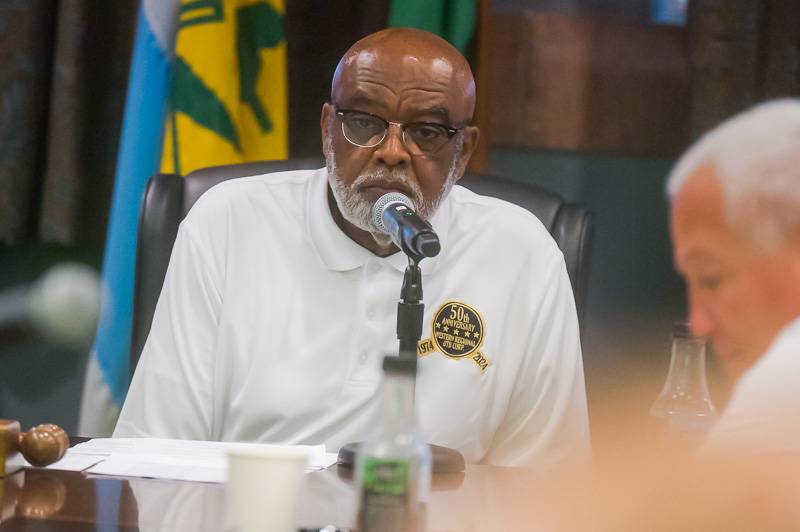OTB chair will no longer require meeting attendees to recite the Pledge of Allegiance

Board President Dennis Bassett said on Wednesday that he will no longer require people attending Western Regional OTB meetings to recite the Pledge of Allegiance.
"I would like to say I erred and that I respect the First Amendment," Bassett said.
His decision to tell attendees that they needed to stand for the pledge and place their hands over their hearts or leave the meeting was something he had "no right to do."
"I'm just trying to be a good board chair and I made a mistake," Bassett said. "Not respecting the First Amendment was a mistake on my part."
The Pledge of Allegiance was written in 1892 by the socialist minister Francis Bellamy, who lived from 1855 to 1931. It was first published in The Youth's Companion later that year.
The Youth's Companion promoted the placement of flags in classrooms and placed more than 26,000 of them in classrooms near the close of the 19th Century.
The pledge wasn't included in the U.S. Flag Code until 1942. Prior to World War II, students were encouraged to recite the pledge at school with a hand raised toward the flag. During the war, citizens realized the salute was too similar to a Nazi salute, and the practice of placing the right hand over the heart began.
In addition to First Amendment concerns, requiring people to leave a public meeting for anything other than a closed session or disruptive behavior violates the state's Open Meetings Law.
